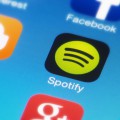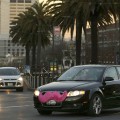In a nutshell: The gig economy is growing, fueled by pioneers trying to become the next big thing. But not everyone believes the gig economy is good for workers.
You know you can hail a ride through Uber or rent out a home through Airbnb. These two popular services — and more like them — are examples of the gig economy, a force that’s changing the way people share, trade or swap goods and services using websites or apps.
The gig economy uses a business model that was simply unthinkable 20 years ago, as the mindset and technology that enable peer-to-peer commerce didn’t exist. The gig economy will keep growing as mobile usage increases, in the United States and around the world. A report published by CNBC last year found that the number gig economy workers has grown 27 percent more than conventional employees over the past 20 years.
On the Other Side …
However, not everyone is a fan. Critics say that workers may face economic insecurity because they don’t receive a steady paycheck and health and retirement benefits. They also say the gig economy can provide a way to circumvent the insurance and licensing requires that traditional companies must contend with.
There are signs that gig economy workers are harder to retain than conventional workers. TechCrunch cites recent research that shows a “sharp drop” in Uber’s ability to retain new drivers.
Examples of the Gig Economy
No matter your needs and industry, there may be an app or website to connect you with freelance talent. Some industries and professions that have been changed by the gig economy are:
- Ride sharing
- Car sharing
- Home sharing
- Writing and editing
- Graphic design
- Coding and app development
- Legal service
- Pet services (dog walking and pet sitting)
- Errands and tasks
Origins of the Modern Gig Economy
The idea of using freelance labor is not new. But some entrepreneurs found a way to leverage technology to connect independent workers and consumers.
In 2010 Uber, a San Francisco-based startup, launched a mobile app to help people hail a ride when they unable to secure a cab. Uber had a team of drivers with luxury cars and charged 1.5 times the standard cab fare to customers. The company’s turning point came in 2012, when it went from having a team of drivers to allowing any qualified driver to provide rides requested through its mobile app.
Two years before Uber, Airbnb launched during the Democratic National Convention in San Francisco to take advantage of the city’s room shortage, according to TechCrunch. Within one year, the company saw an 800% increase in nights booked, and listings in 89 countries.
As the business model fueling the gig economy matures, a number of large companies are looking to participate. In mid-2017, home furnishings giant Ikea purchased TaskRabbit, a service that provides workers to do household tasks — such as building Ikea furniture.
Editor’s note: This is the second in a two-part series about the gig economy The first article, found here, explores the gig economy and profiles the people involved in it.






